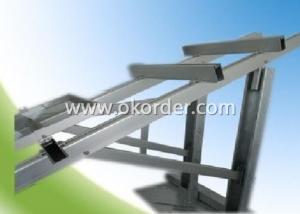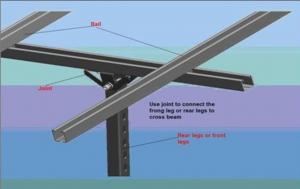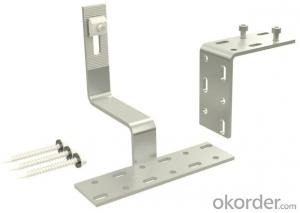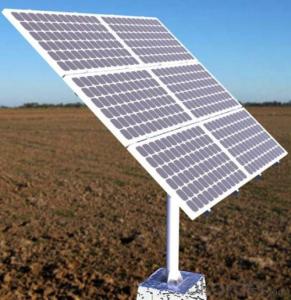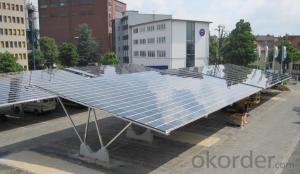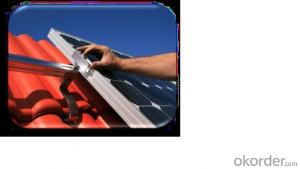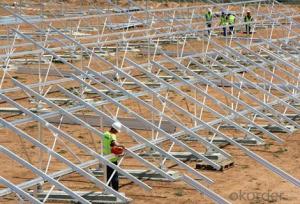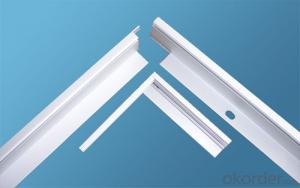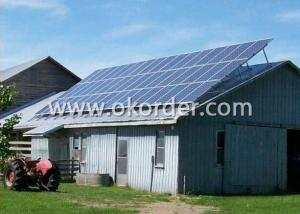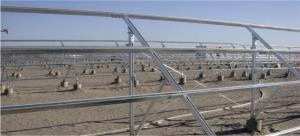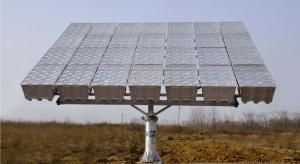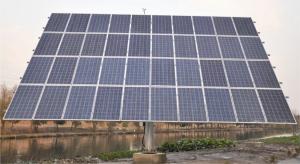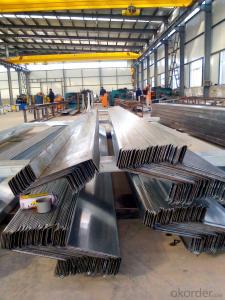Solar Panel Monting System TT-DR1
- Loading Port:
- Shanghai
- Payment Terms:
- TT OR LC
- Min Order Qty:
- -
- Supply Capability:
- 50万套 set/month
OKorder Service Pledge
OKorder Financial Service
You Might Also Like
PV Mounting brackets are special solar photovoltaic systemfor placing, installing, fixing the solar panel design. Generally materials arealuminum, steel structure, stainless steel. PV mounting products at groundmounting system, flat roof mounting system, adjustable angle roof rack system,inclined roof rack system, column bracket system.
The Ground Mounting System including concret basement sysytemand steel pipe sysytem, Titanergy provides total solution for flat or pitchedroof with patent products.On the basis of the given project data, specificnational standards and guidelines, Titanergy will calculate the completestructural analysis and create a complete project plan to make sure reliablestructural safety.We provide high quality HDG steel and aluminum products forthe ground mounting sysytem,witch can make sure the security and durability ofthe project.
Features and Advantages
n The rail bracket is easy to install, just use simple tools(eg, Allen wrench) can be easily installed. Rail connecting member can freelyadjust the length, the stent may be pre-installed on the roof, and thenappropriately adjusted according to the size of the solar panel.
n The combination of strong, aluminum rails and card blocks fora variety of venues and a variety of materials roofs (such as metal, ceramicand other kinds of tile surface)
n Component compatibility, and rail can meet PV modules fromdifferent manufacturers.
n accuracy, the length of the rail to the nearest millimeter,the construction process, not because of the length is too long or too shortfor the second cut.
n flexible assembly, rail hooks can adjust the spacing modulearray and tile has been installed successfully address the uneven roofconstruction led to difficult problems.
n design standards, product design and development process instrict accordance with GB, the German standards and other internationalstandards to ensure products reach the world advanced level.
n Quality assurance, the stent main material is high-qualityaluminum and stainless steel, effectively prevent corrosion of oxidation.Products can be recycled, reducing environmental pollution.
n Carried out strictly according to the current specificnational standards
n Perfectly optimized components and complete structuralanalysis for the sysytem
n High corrosion resisitance ensure the stability and highdurability
n Total test and certification make sure the high quality ofthe products
n Maximum pre-assembled in factory,quick mounting onsite,timesaving
10-year durability warranty
Technical Data
n Design Period:25 years
n Installation Site: Open area
n Array Angle:10°~60°
n ModuleType:Framed or unframed
n Material:Q235B,Al 6063-T5,Al 6005-T5,StainlessSteel A2-70
n Coating:HDG/Anodised
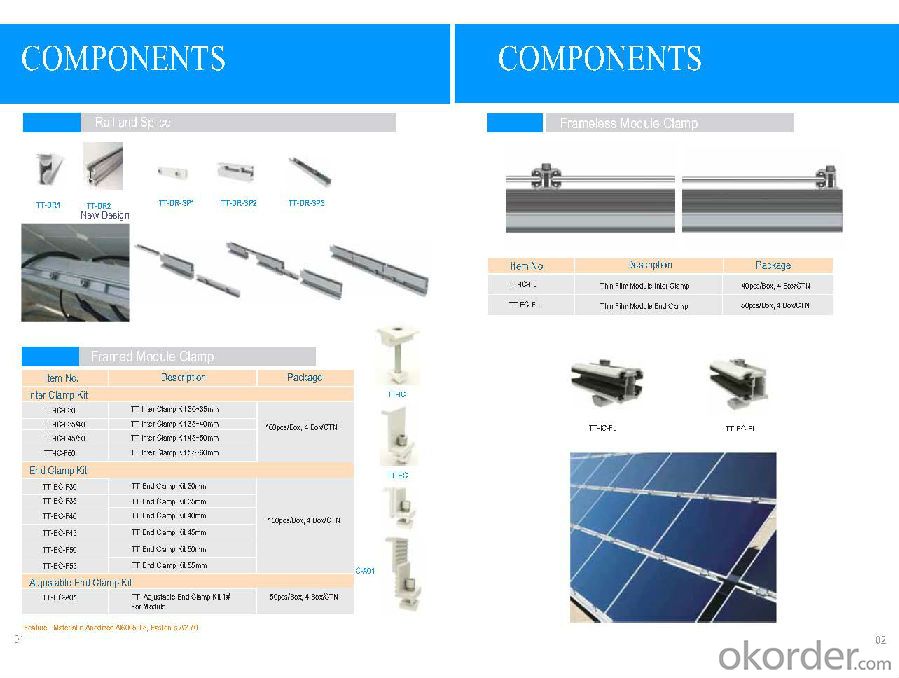

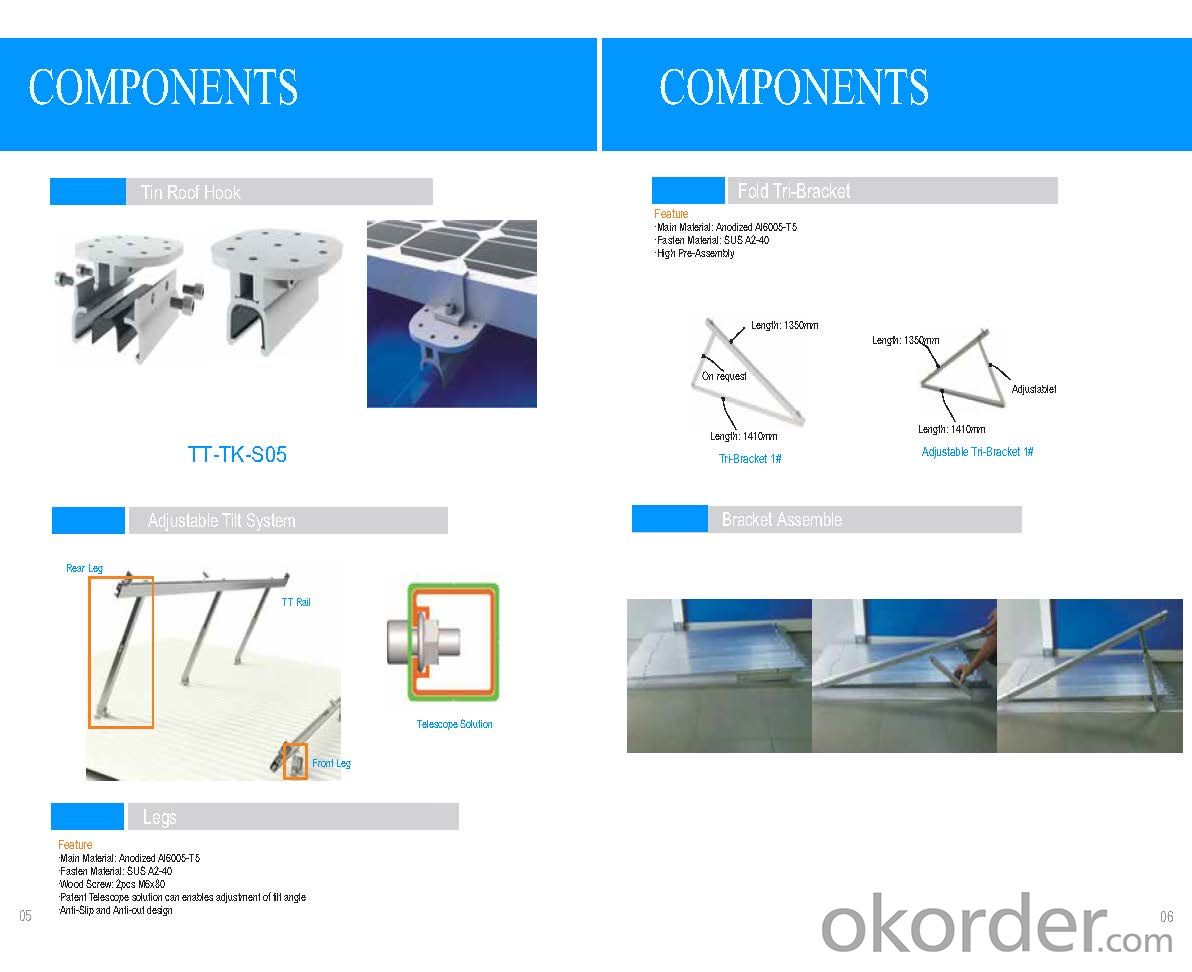
- Q:Can a solar mounting system be installed on a rooftop with a synthetic roof?
- Yes, a solar mounting system can be installed on a rooftop with a synthetic roof. Synthetic roofs, such as those made from materials like rubber or plastic, can typically support the weight and installation requirements of a solar mounting system. However, it is important to consult with a professional installer to ensure that the specific type and condition of the synthetic roof is suitable for the installation.
- Q:Are there any specific requirements for installing solar mounting systems in high-temperature regions?
- Yes, there are specific requirements for installing solar mounting systems in high-temperature regions. These requirements include using materials that can withstand high temperatures, ensuring proper ventilation and airflow around the solar panels, and considering the impact of temperature on the efficiency and performance of the system. Additionally, proper maintenance and monitoring of the system are crucial in high-temperature regions to prevent overheating and ensure optimal performance.
- Q:Can a solar mounting system be used with solar-powered water pumps?
- Yes, a solar mounting system can be used with solar-powered water pumps. The solar mounting system provides the necessary support and stability for the solar panels that generate the electricity required to power the water pumps. This allows for an efficient and sustainable solution for pumping water using solar energy.
- Q:Can a solar mounting system be used in areas with limited access to net metering programs?
- Yes, a solar mounting system can still be used in areas with limited access to net metering programs. While net metering programs allow solar energy users to receive credits for excess electricity generated and fed back into the grid, a solar mounting system can still be valuable in such areas for self-consumption of the generated solar energy. This means that the solar energy produced can be used directly by the property, reducing reliance on grid electricity and lowering overall energy costs. Additionally, in areas without net metering programs, solar energy users may explore other options such as feed-in tariffs or power purchase agreements to make the most of their solar installations.
- Q:Are there any specific requirements for buoyancy when using a solar mounting system for floating solar?
- Yes, there are specific requirements for buoyancy when using a solar mounting system for floating solar. The mounting system needs to be designed in a way that it provides sufficient buoyancy to support the weight of the solar panels and other associated equipment, while also ensuring stability and preventing any tilting or sinking. Additionally, the buoyancy requirements may vary depending on factors such as the size and weight of the solar panels, water conditions, and the specific location of the floating solar installation.
- Q:Can solar mounting systems be installed on buildings with limited roof space?
- Yes, solar mounting systems can be installed on buildings with limited roof space. There are various types of solar mounting systems available, including flush-mounted and ballasted systems, which can be customized to fit the specific constraints of a building's rooftop. These systems are designed to maximize the use of available space and ensure efficient installation of solar panels, even in scenarios with limited roof area.
- Q:Can solar mounting systems be installed on historical buildings?
- Yes, solar mounting systems can be installed on historical buildings. However, it is crucial to ensure that the installation is done in a way that preserves the historical integrity of the building. This may involve using low-profile or hidden mounting systems, integrating the panels into existing structures, or even mounting them on nearby structures if necessary. Additionally, it is important to consult with preservation experts and obtain any required permits before proceeding with the installation.
- Q:Are there any specific requirements for installing a solar mounting system on a rooftop with bird deterrents?
- Yes, there are specific requirements for installing a solar mounting system on a rooftop with bird deterrents. The bird deterrents should be designed in such a way that they do not obstruct or interfere with the proper installation and functioning of the solar panels. Additionally, the solar mounting system should be compatible with the bird deterrents and ensure that they do not compromise the structural integrity of the rooftop or pose any safety risks. It is important to consult with a professional installer who has experience in both solar installations and bird deterrents to ensure a successful and safe installation.
- Q:Are there any specific requirements for installing a solar mounting system on a rooftop with antennas?
- Yes, there are specific requirements for installing a solar mounting system on a rooftop with antennas. It is important to consider the structural integrity of the rooftop and ensure that the solar mounting system does not interfere with the functionality of the antennas. Additionally, proper clearance and spacing between the solar panels and the antennas should be maintained to avoid any signal interference. It is recommended to consult with professionals who specialize in both solar installations and antenna systems to ensure a successful and compliant installation.
- Q:Are there any specific requirements for installing solar mounting systems in areas with high snowfall?
- Yes, there are specific requirements for installing solar mounting systems in areas with high snowfall. These include designing the mounting system to withstand the weight of heavy snow loads, ensuring proper tilt angles to allow snow to slide off easily, using reinforced structures and materials to prevent damage from snow accumulation, and incorporating mechanisms such as snow guards or heating systems to prevent snow from sliding onto the solar panels. Additionally, regular maintenance and snow removal may be necessary to ensure optimal performance of the solar installation in snowy conditions.
1. Manufacturer Overview |
|
|---|---|
| Location | |
| Year Established | |
| Annual Output Value | |
| Main Markets | |
| Company Certifications | |
2. Manufacturer Certificates |
|
|---|---|
| a) Certification Name | |
| Range | |
| Reference | |
| Validity Period | |
3. Manufacturer Capability |
|
|---|---|
| a)Trade Capacity | |
| Nearest Port | |
| Export Percentage | |
| No.of Employees in Trade Department | |
| Language Spoken: | |
| b)Factory Information | |
| Factory Size: | |
| No. of Production Lines | |
| Contract Manufacturing | |
| Product Price Range | |
Send your message to us
Solar Panel Monting System TT-DR1
- Loading Port:
- Shanghai
- Payment Terms:
- TT OR LC
- Min Order Qty:
- -
- Supply Capability:
- 50万套 set/month
OKorder Service Pledge
OKorder Financial Service
Similar products
New products
Hot products
Hot Searches
Related keywords


